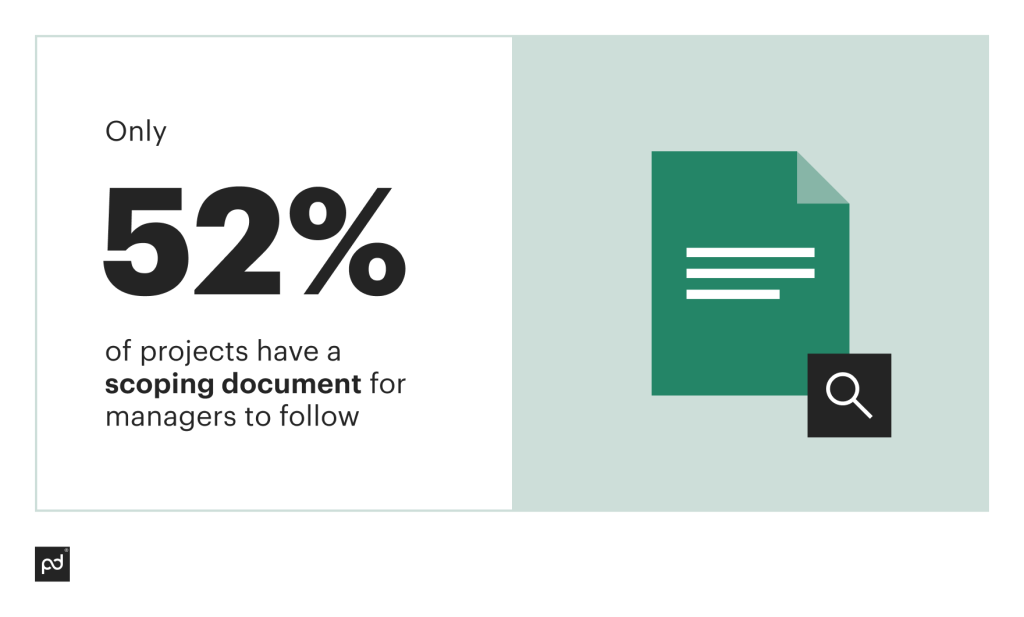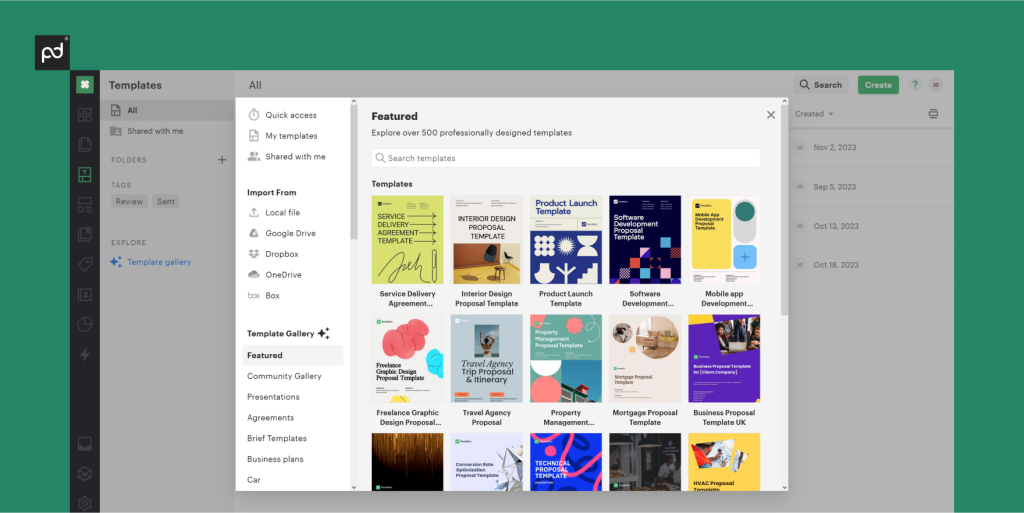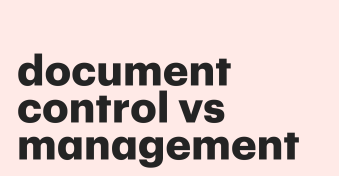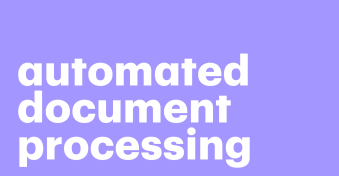Project documentation is how leaders create a timeline for their projects, a framework for measuring progress, and a system that ensures accountability.
There are about a million ways for a project to “go wrong” — from inadequate resource allocation to a lack of monitoring and communication — and project managers must plan for every scenario.
On this page, we’ll take a closer look at how to do documentation properly, with examples and document templates that’ll give you a headstart.
Key takeaways
- Documentation is an integral aspect of project management
- There’s no one-size-fits-all document; they all serve different purposes
- Using templates removes hurdles in the document creation process
- You can use 1000+ business templates for free when you join PandaDoc
What is project documentation and why is it so important?
Documentation is more than just admin; it’s crucial to any project’s success.
We must first examine the key principles underpinning effective project management to understand why.
For a project to succeed, you must ensure
- Clear objectives — so everyone knows what they’re working toward.
- Good communication — so everyone knows what their tasks are.
- Effective resource planning — so tasks can be feasibly achieved.
- Stakeholder collaboration — so the project aligns with your overall business strategy.
At each step of the journey, a project’s documents provide the backing for each point.
A checklist of deliverables and objectives can be agreed upon through a scope of work document.
A project plan is where resources are allocated, and individual responsibilities are assigned.
Throughout all of this, stakeholders are encouraged to share their thoughts and feedback.
Admittedly, good communication comes more so through personability and leadership skills.
However, having these documents in place before you fire a project’s starting gun will lend authority to what you are saying.
How to make documentation
So, what should a project document look like, and how can managers get started?
First, you must understand that not all documents are made equal.
They serve different purposes — from initiating a project to reflecting on its completion — and, therefore, are composed of different components.
When drafting a document, you must always consider who will read it. Is the document for internal use or intended to persuade an external client?
You’re not just trying to provide relevant information; you should also anticipate (and answer) the reader’s questions.
In truth, the writing process is tricky. Drafting a document with no inclination of what to write about and no prior experience will inevitably leave you with writer’s block.
It’s why most project managers use premade document templates (or try to create their own).
Sure, you’ll still need to populate the template with your own written copy and metrics, but just having the structure in place will get you over the first hurdle.
And with PandaDoc, we’ll also help you with the rest — helping you manage documents and gather eSignatures from everyone involved.
Where to store project documents
Now comes the question of where to store your project documents.
Generally speaking, there are two significant factors to consider:
- Accessibility: Project documents should be readily available to all relevant parties, such as managers and stakeholders, and sometimes your employees. If the project involves collaboration with external clients, they, too, should be able to view and leave comments next to your docs.
- Security: However, document accessibility should not compromise security. Your docs are safer when password protected, encrypted, and stored on separate systems to your work machines. You should have differing access controls depending on who the document is intended for.
Alternatively, you could use a pre-made document management solution like PandaDoc.
All the data we store is encrypted to AES-256 standards, SOC 2 Type II certified, and built for compliance with GDPR and HIPAA.
You can easily set access controls and invite parties to share feedback or take actions like leaving their eSignature, and more.
The benefits of creating documentation for projects
Here at PandaDoc, we think document-keeping is one of project management’s ‘bread-and-butter’ aspects.
However, we also appreciate that managers don’t always have the direction or knowledge to do documentation effectively.
We’re here to convince you that project documentation isn’t just worthwhile and a business necessity.
You have to put yourself through this process to ensure long-term success.
Not convinced? Let’s run through the significant benefits:
Documents provide clarity
Codifying all the relevant information for a project in one place is great for clarity.
Anyone can access it anytime and see a structured outline of the project’s objective, scope, tasks, and deliverables.
They can see their role, who they will report to, and the next steps.
If anyone has questions, they can re-read the document. And if they make a mistake, it is there for them in writing.
They also provide a forum for parties — stakeholders or clients — to share feedback from the offset.
Collaboration becomes more effective when everyone is on the same page, and your project will be more likely to succeed.
Now consider this cumulative effect over the long term — since project documentation serves as a knowledge repository for your future endeavors.
As team members come and go, comprehensive documentation ensures a smooth transition of knowledge and a consistent company culture.
Documents help you make important business decisions
Thorough project documentation includes risk assessments, mitigation plans, and decision-making protocols.
It forces you to address potential sticking points head-on — considering how likely they are and what action must be taken to avoid them.
This process directs project managers to make key business decisions early.
Doing so will save you from the headache of reallocating resources later or scrambling to cover your bases in emergencies.
Once the project has concluded, you can refer to documentation to assess the impact of changes, evaluate how alternatives may have played out, and inform decisions about your next project.
Documents are a top method for ensuring communication
Projects run on effective communication. Your employees must know what is expected of them and how to achieve it.
Your supervisors must monitor this progress and communicate concerns to the project managers.
And you (the project manager) must report to clients and stakeholders.
Documentation is the thread that keeps these parties aligned.
It’s a platform where anyone can view project updates, milestones, and expected challenges ahead.
Plus, it outlines communications channels and who to reach in an emergency.
Project document examples
Project proposal
In the chronology of an average business project, the proposal is the part that comes first.
This document is often intended to be persuasive, outlining a business case for a third party to enter into proceedings with yours or for pitching an idea to internal stakeholders.
A typical project proposal will include a rough overview — including broad goals, scope, deliverables, and budget estimates — and a justification for why the project is necessary.
Since its goal is simply seeking approval, this document won’t detail people’s responsibilities or advanced risk analysis.
However, it will provide a helpful reference point for the subsequent phases of document creation.
→DOWNLOAD NOW: FREE PROJECT PROPOSAL TEMPLATE
Project charter
The next project documentation example we’ll discuss is the project charter.
You may also hear this referred to as a ‘statement of work’ document.
The charter focuses on the scope of a project — after rounds of feedback from stakeholders and management.
It’s relatively brief and formal but serves a crucial purpose at an early stage.
Once it’s been agreed upon, the signing of a charter officially signals the start of a project.
Despite its importance, the project charter can sometimes fly under the radar.
In fact, according to The State of Project Management 2021 report by Wellingtone, only 52% of projects have a scoping document for managers to follow.
Don’t take this as a green light to avoid writing one; see it as an opportunity to get an edge on your competitors.

→DOWNLOAD NOW: FREE PROJECT STATEMENT OF WORK TEMPLATE
Project plan
If the purpose of the project charter was to get management and stakeholders in agreement, the project plan is to onboard the wider team.
It outlines the entire lifecycle of a project, such as a breakdown of tasks and a timeline for when milestones should be achieved.
From here, it will zoom in and discuss how resources will be allocated — discussing each employee’s role and how they will be monitored.
It will also discuss reporting responsibilities and how the team will communicate.
A project plan will be long and detailed, and it’s unrealistic to think it’ll always be accurate.
You should treat it as a dynamic document and be prepared to make revisions or multiple versions, providing a comparative reflection for when the project is complete.
→DOWNLOAD NOW: FREE PROJECT SCOPE TEMPLATE
Project financial report
One sample project documentation that stakeholders often ask for is a financial report.
It’s for good reason — they need to know that their investment is being treated with due care and that it has the best chance of delivering returns.
You can provide them with a fully costed financial document to allay their concerns.
This should break down how the project budget is spent, such as allocations and expenditures, and how much ‘wiggle room’ you’ll have if things don’t go perfectly.
→DOWNLOAD NOW: FREE PROJECT FINANCE REPORT TEMPLATE
Project status report
You may want to create documentation that proves you are fulfilling your project charter’s ‘service level agreement (SLA).’
These service levels represent the minimum progress you should make toward project completion.
The project status report then provides a snapshot of the project’s current state and a rationale for why you are ahead or behind schedule.
It should talk about emerging challenges and how you intend to counter them.
→DOWNLOAD NOW: FREE PROJECT SLA TEMPLATE
Project retrospective
The project retrospective, or ‘post mortem,’ is created after completing a project’s objectives.
It’s meant to be a platform for reflection — inviting responses from employees and stakeholders — which will inform the project manager on what went well and what could be improved.
Writing a project retrospective is a great way to lead by example, instilling a continuous improvement and learning culture.
You don’t have to write one for each project, either, with a ‘business review’ document doing much of the same thing.
→DOWNLOAD NOW: FREE QUARTERLY BUSINESS REVIEW TEMPLATE
Other types of project documentation example
There are other types of technical documentation that take a narrower focus than the types listed above.
Let’s consider some of the most common documentation examples for a project:
- Economic impact report: Usually created for local or national governments, the economic impact report focuses on the positives (and potential negatives) a project could have on local people. For instance, it could project job creation or tax revenue increases.
- Environmental impact report: Likewise, an environmental impact report focuses on the effect of a project on its natural environment. It may include a detailed breakdown of resource usage and the effect of this on local wildlife, air, or water quality.
- Risk management plan: Created for stakeholders, the plan elaborates on your methodology for ranking potential risks.
- Disaster recovery plan: In the worst-case scenario, your disaster recovery plan directs how to resume project operations after a disruptive event.
- QA plan: Quality assurance plans to focus on your deliverables, specifying product standards, testing processes, and verification mechanisms for third parties.
Best practices for successful project documentation
1. Create a project documentation team
If your head is spinning at the prospect of writing all of the above documents yourself — don’t worry; it’s not a one-person job.
Document creation is typically a collaborative process, drawing opinions from team members, stakeholders, and management.
Nominate people from each category who are the best subject matter experts for the project.
2. Define your project goals
The most important part of your project documentation is to define your goals and scope of work.
At an early stage, you need to agree with stakeholders on your objectives within a timeframe.
This provides clarity, keeping everyone on the same page, preventing ‘scope creep’, and providing direction for your project plan.
3. Store documents with easy access
For a document to serve its purpose, it needs to be readily accessible for team members and stakeholders.
The best way to achieve this is with a document collaboration platform like PandaDoc.
With our built-in document tracking software, project managers can monitor engagement metrics and remind recipients.

4. Use templates with a standard format
The document creation process is much easier when working on a structured template.
It’s not just a case of filling in the gaps, as templates can also prompt you to include sections you might not have initially considered.
However you approach it, a document template saves you time and brings your project closer to reality.

5. Dedicate the time and review regularly
One of the biggest advantages of documentation is that it provides a record of everything — following a project from its inception to its completion.
This provides a great learning opportunity, as you can see exactly what went well and where there is still room for improvement.
Make this reflection a core part of your process, which you do during and after every project.
Find all the project documentation templates you need with PandaDoc
To wrap up, project documentation is an essential skill for managers to learn.
Documents — whether a pledge to your stakeholders, a service-level promise, or a structured plan for the road ahead — are set in stone.
Once your team and stakeholders have agreed to them, your project can be considered ‘official’ and work can begin.
You’ll rest easy knowing you’ll always have plans and protocols for whatever comes your way.
The only downside is that you’ll have more files and documents than you know what to do with.
Luckily, PandaDoc’s document management solution has you covered.
Disclaimer
PandaDoc is not a law firm, or a substitute for an attorney or law firm. This page is not intended to and does not provide legal advice. Should you have legal questions on the validity of e-signatures or digital signatures and the enforceability thereof, please consult with an attorney or law firm. Use of PandaDoc services are governed by our Terms of Use and Privacy Policy.


